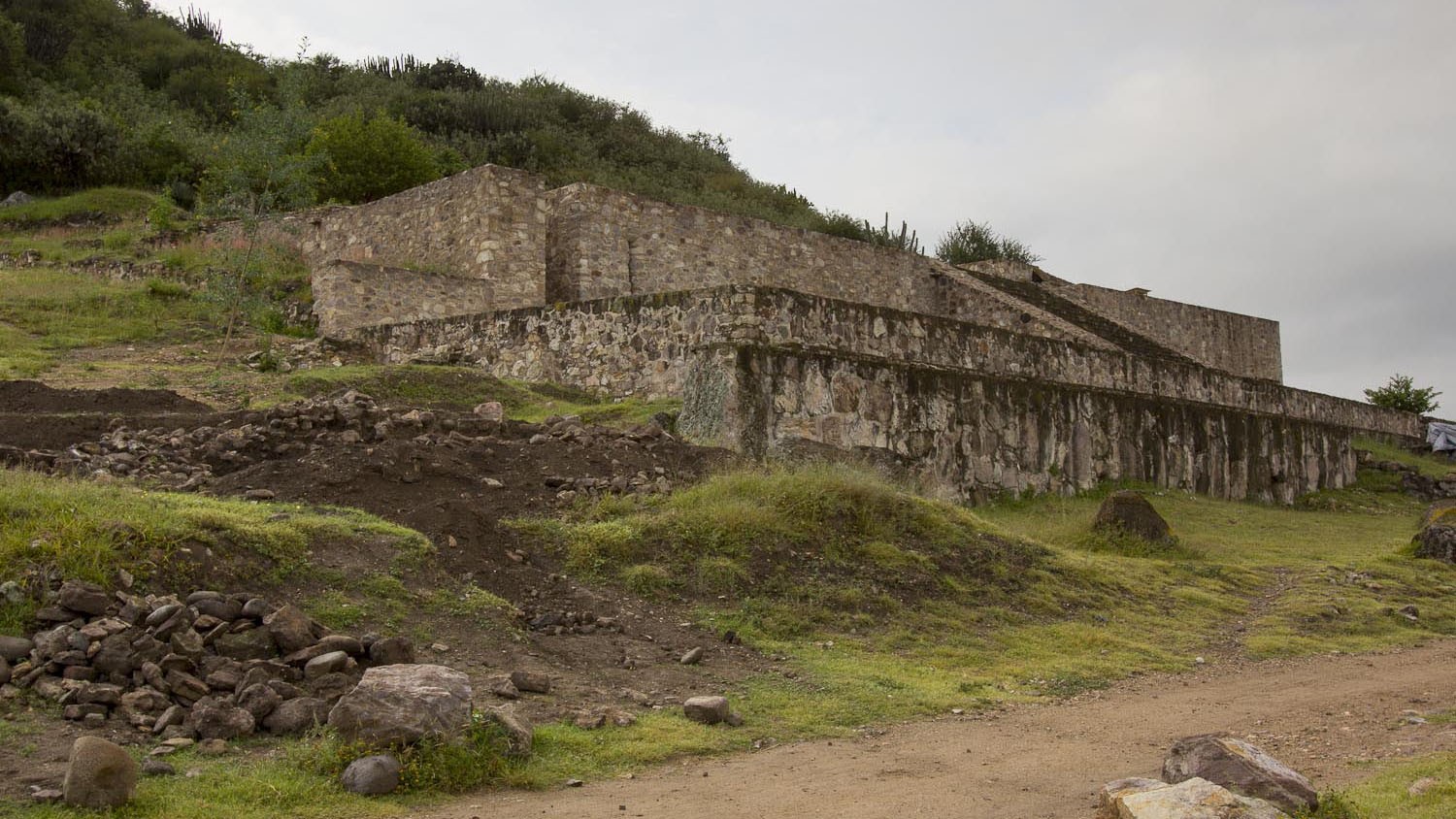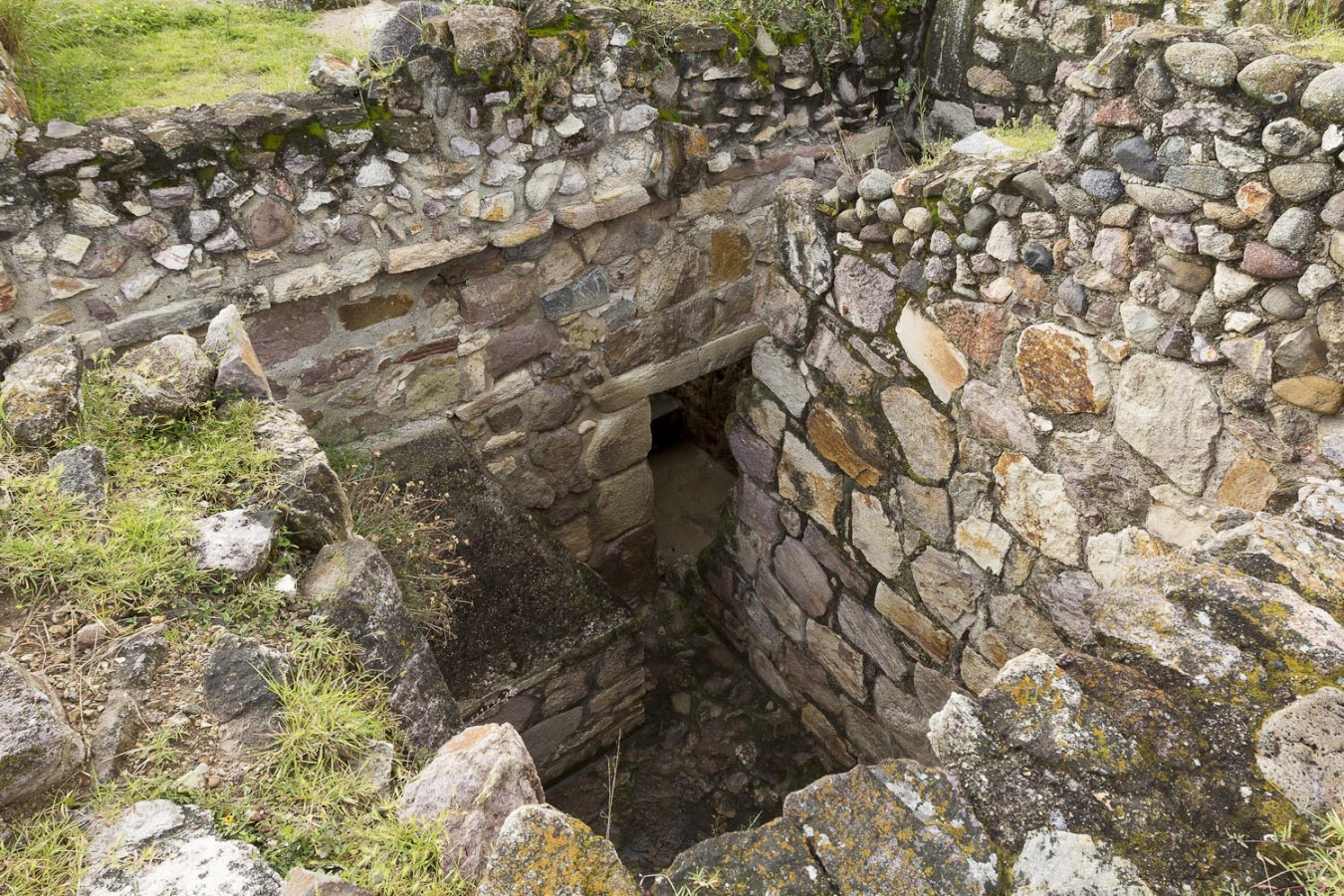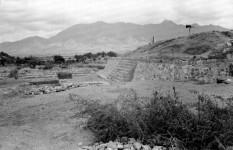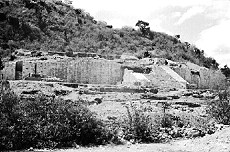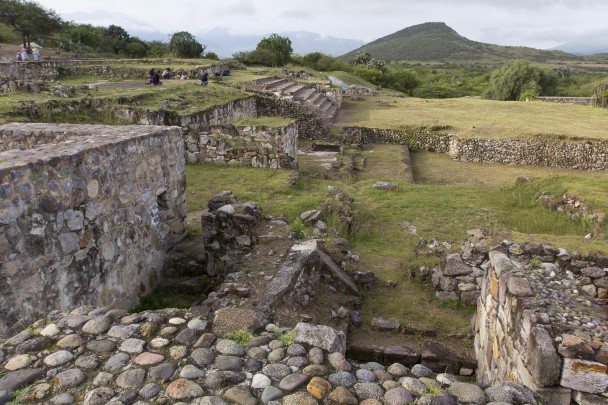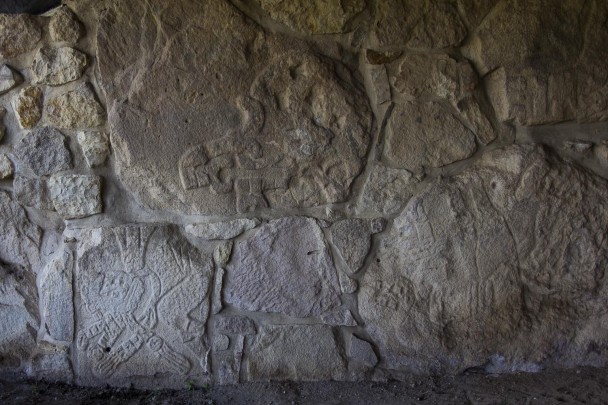Dainzú
Hill of the organ pipe cactus
Contemporary with Monte Alban, it is remarkable for the adaptation of the buildings to the terrain, which appear to lean against the hillside. There are also magnificent reliefs depicting ball players.
About the site
The Dainzu archeological site is in the eastern section of the valley of Oaxaca. Its name comes from dannizhu, meaning “hill of the organ pipe,” a reference to the cactus growing on the slopes. In Zapotec it is called quiebelagayo, equivalent of the Nahuatl macuilxochitl, or five flowers, which is the name used in the present day town very close to the site. Macuilxochitl was also the name of one of the principal gods of the ballgame, and the association with this most ancient sport and religious or ritual practice was one of the most important features of this site.
This site dates from Monte Alban period I to Monte Alban IV, that is, between 600 BC and 1200 AD. It is very likely that settlement began before Monte Alban itself, as finds of ceramic material correspond to older phases within the central Oaxaca valleys.
This site is typified by Structure A, the principal monument on the slopes of Cerro Danush, whose shape was altered in the pre-Hispanic period. The civic-ceremonial center of the pre-Hispanic settlement occupied the western part of the hill and it is possible that the hill itself was a sacred place.
The length of occupation of the Dainzu site points to its regional importance, with notable features such as the architecture being modified over many years. This is reflected in the monumental size of Structure A, its tombs, ballcourt and temples built on a man-made landscape, based on a system of terraces, which points to the complexity of the site’s conception and social organization. It should be borne in mind that the farming system had to develop in a dry climate. Rainfall levels are very low in the cultivable area of the valley of Oaxaca, which excludes the steep rocky valley sides. The only natural means of irrigation is in the few areas with access to river water.
This site dates from Monte Alban period I to Monte Alban IV, that is, between 600 BC and 1200 AD. It is very likely that settlement began before Monte Alban itself, as finds of ceramic material correspond to older phases within the central Oaxaca valleys.
This site is typified by Structure A, the principal monument on the slopes of Cerro Danush, whose shape was altered in the pre-Hispanic period. The civic-ceremonial center of the pre-Hispanic settlement occupied the western part of the hill and it is possible that the hill itself was a sacred place.
The length of occupation of the Dainzu site points to its regional importance, with notable features such as the architecture being modified over many years. This is reflected in the monumental size of Structure A, its tombs, ballcourt and temples built on a man-made landscape, based on a system of terraces, which points to the complexity of the site’s conception and social organization. It should be borne in mind that the farming system had to develop in a dry climate. Rainfall levels are very low in the cultivable area of the valley of Oaxaca, which excludes the steep rocky valley sides. The only natural means of irrigation is in the few areas with access to river water.
Did you know...
- Building A incorporates a wall with a series of carved stones, which according to researchers represent ball players in a variety of postures.
- The Templo Amarillo ("Yellow Temple") has several tombs with monumental architecture, as well as a ballcourt in a double “T” shape.
Practical information
Monday to Sunday from 10:00 to 16:00 hrs.
$75.00 pesos
Se localiza en el Valle de Tlacolula, al sureste de la Ciudad de Oaxaca.
Take the Pan-American Highway 190 for Mitla, traveling approximately 20 km. Reaching the crossroads with the turn off for the village of Maculixóchitl, take the right (south) and travel along this road for 1.5 km until reaching the entrance to the Archeological Zone of Dainzú.
Services
-
+52 (951) 568 03 16
-
This email address is being protected from spambots. You need JavaScript enabled to view it.
-
FACEBOOK
Directory
Jefe de Zona Arqueológica
Leobardo Daniel Pacheco Arias
This email address is being protected from spambots. You need JavaScript enabled to view it.

